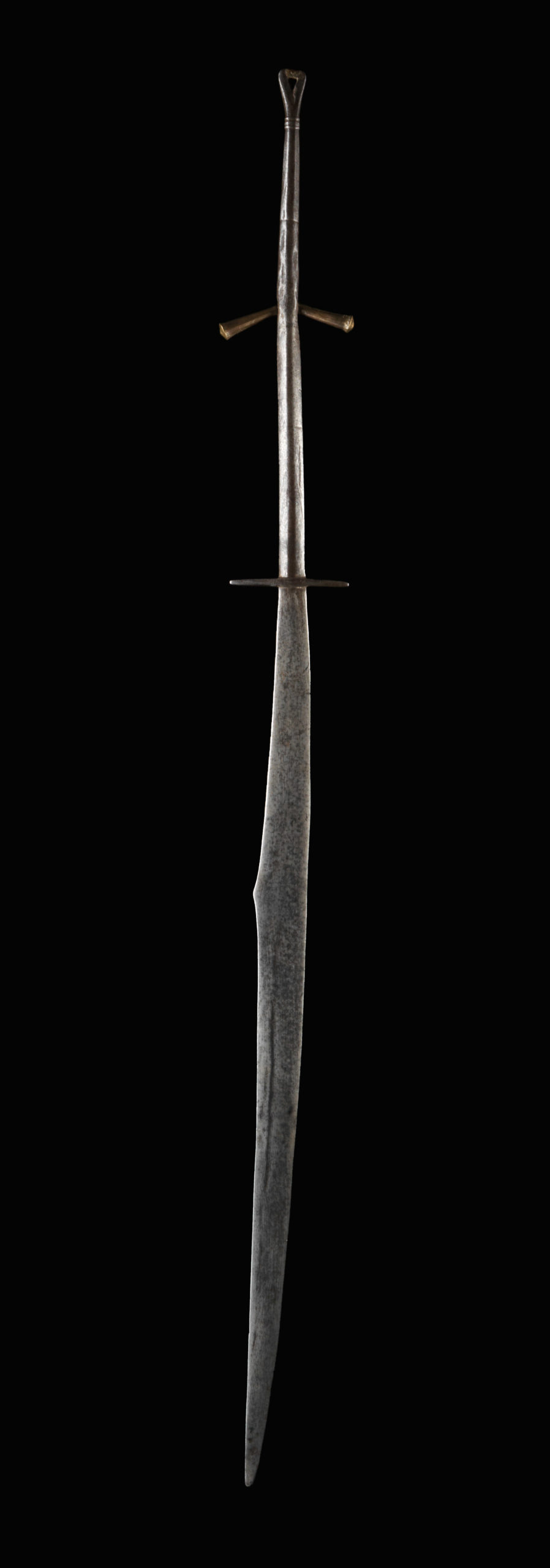Sword „khasi dao“
This long sword is forged from locally melted steel. The blade is lancet shaped and single edged. It has an elevation in the area of the back, about one third of its total length, which can be considered a rudiment of Indian forms. The straight crosspiece through which the blade tang runs, as well as two protruding extensions cast in brass at the rear of the handle and the loop-shaped end loosen the austere form. The handle, which is round in cross-section, is skilfully forged onto the blade hinge. The weapon is thus forged from several elements, which requires a good knowledge of forging techniques. It is elastic and has all the technical characteristics of competently forged and hardened steel.
Little is known about the origin and use of this sword form. In Central India, similarly long-handled swords are carried in Hindu processions, which is probably where the origin lies. There are no reports about its use in war. However, there is some evidence that the swords may have played a central role in the reburial of the bones at the secondary burial. In the traditional Khasi religion (kur), a distinction is made between ka niam-im (rituals of the living) and ka niam-iap (rituals of the dead), much like in the Toraja. During the transfer of the bones to the ossuary (mawbah), which was probably a megalithic tomb of the tribal ancestors in former times, these swords were probably carried along to deter malevolent influences on the way. The ritual of transferring bones into the mawbah-leg house (which is called “ancestor stone”) is one of the most important actions within the rituals of the Khasi religion. Should the process of reburial be disturbed, for example by influences from the invisible sphere, the dead person would not find the way to the tribal mother in the hereafter. Many of the elements of the Khasi religion originate from Hinduism, from which the Khasi have adopted much and where temple and processional swords also play an important role.
The matrilineal Khasi neighbouring the Garo speak a Môn language, which is related to Cambodian. Their proper name is Ki Khasi, which means “those born of a woman”. Another common proper noun is Ki Khun U Hynniewtrep, which translates as “The Children of the Seven Huts”.
| Object | Sword „khasi dao“ |
| Culture | Khasi-Naga, Northeast India (Assam, Meghalaya) or Bangladesh |
| Time | 19th century or earlier |
| Dimensions | Length 114 cm |
| Material | Steel, brass |






